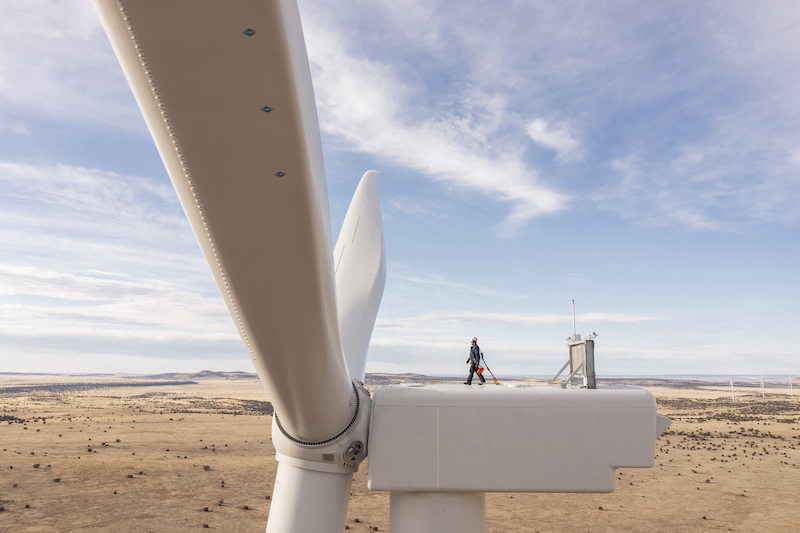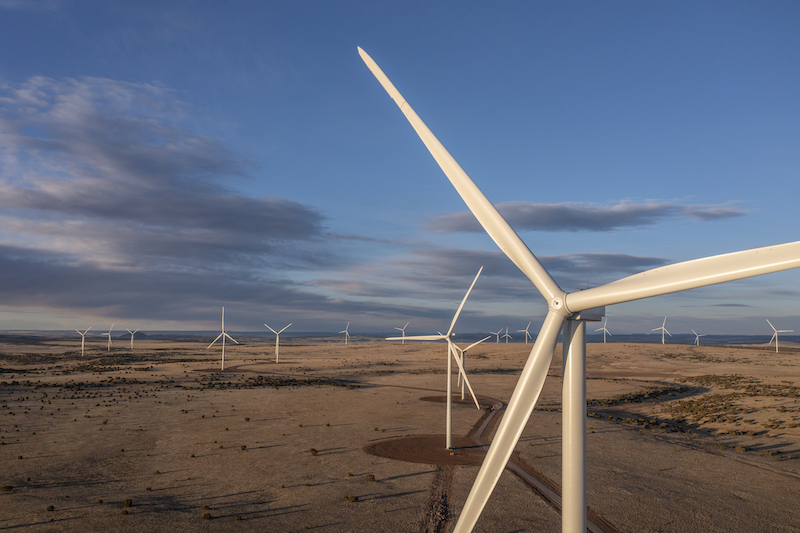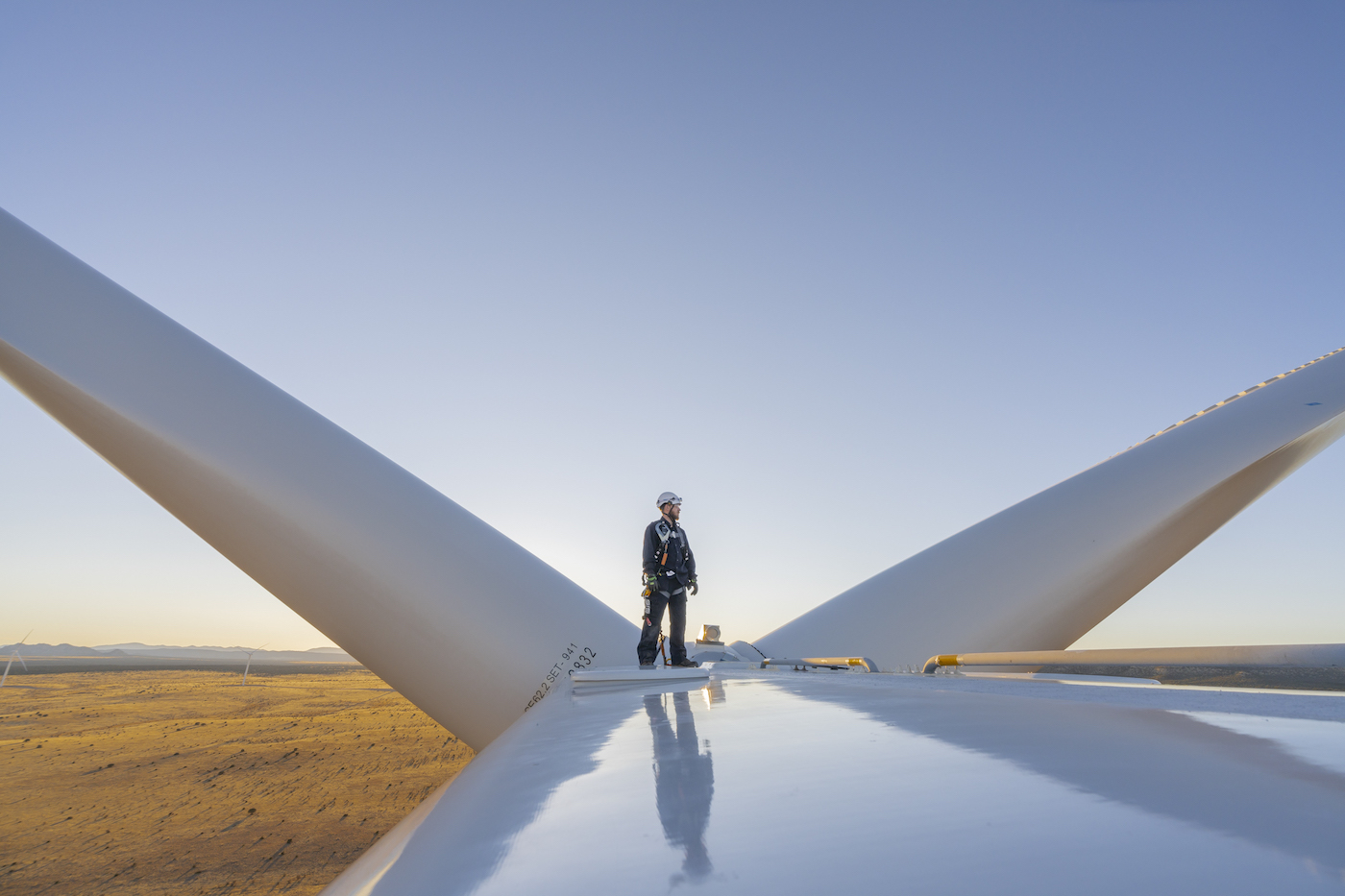Johanna Wellington was almost ready to approve the installation of a new gearbox in one of the wind turbines in GE Vernova’s U.S. fleet. But she paused because she was concerned about the manufacturing process of a subcomponent. The department she leads in GE Vernova’s Onshore Wind business had recently changed its name from Major Components Exchange to Major Components Upgrades, a nod to its new commitment: Any new part placed on an existing turbine had to be a higher-quality component than the one it was replacing. In this case, she wasn’t sure she could back up that internal commitment. So she “stopped the line,” something every Onshore Wind employee is now encouraged to do when they have concerns related to quality.
“My job is making sure we’re ‘injecting medicine,’ not just putting a Band-Aid on a problem,” Wellington says. ”Every time we touch a turbine, the goal is to make it better.”

Wellington’s “stop” order meant the project wouldn’t move forward until her concerns had been addressed. After a quick group discussion and an assessment of components on hand, Kiersten Gregory, the Onshore Wind parts fulfillment leader, directed a member of her team to stop the shipment of the component in question and was able to redirect a higher-quality component to the site. Wellington signed off with confidence. Ultimately, the subcomponent in question was replaced with a higher-quality one.
“We want every employee to have the confidence they need to put their name behind the work they do,” says Tom Fischetti, CTO and engineering leader. “Every employee, starting with those who design and engineer our products, now underwrites their decisions by signing off on them, every step of the way.” People will still make mistakes, he adds. “But the process assures that we’re taking the time to review our work and make sure we’ve considered the right assumptions and analyses with regard to safety, quality, and everything else before we move it forward.”
Wellington and Gregory continue to be hyper-focused on fixing problems quickly, which in turn adds value for the customer. This is no mere procedural tweak. It’s part of a business-wide revolution taking place in GE Vernova’s Onshore Wind business. While safety has always been a non-negotiable priority, it was about one year ago that Vic Abate, the business’s new CEO, made it the company’s mission to streamline how it designs, makes, and services its products, implementing an array of lean management tools and putting an emphasis on the “Q” in SQDC (safety, quality, delivery, and cost). From engineering to manufacturing to fleet services to performance management, Abate and a determined group of leaders have been working overtime to transform Onshore Wind into a more efficient — and profitable — operation. And the results are already showing.
Zero-Defects Goal and the World’s Best-Running Fleet
The business’s recommitment to quality comes at a critical time, following a few challenging years for the global wind power industry, which is on the cusp of what’s expected to be a remarkable increase in demand. The business leads in U.S. onshore wind turbine market share, with nearly 55,000 onshore turbines installed in more than 50 countries. Yet increasing production while keeping the focus on SQDC is imperative. According to Abate, “the world is going to double its wind capacity in the next 10 years,” which means anticipated double-digit growth for his business over the upcoming decade.
“We are making sure we have the world’s best-running fleet, and that starts in manufacturing,” says Frank Baur, who leads manufacturing and lean in Onshore Wind. Baur sees GE Vernova’s production facilities as “stop gates” when it comes to quality assurance. “Our goal is zero defects — zero — leaving manufacturing and going into the field.”
It’s a high standard, but Baur believes it can be achieved through lean management, a system of continuous improvement that has been deployed throughout GE’s businesses in recent years. Quality control issues are always going to arise in industrial processes, he explains. The way they’re handled makes all the difference.

“When we stop the line for quality — just as we have always stopped the line for safety — we are simply making a problem transparent so we can deal with it,” he says. “The important part is reacting to the problem in a very structured manner by using problem-solving tools and skills, and making sure it doesn’t repeat.”
In a back-to-basics-style strategy announced by Abate in 2022, Onshore Wind is leading with a “workhorse” product strategy. Where the business had been selling more than three dozen wind tower designs, it will now focus on offering its most reliable and bankable products. By putting its emphasis on these high-performing workhorses — all of which belong to either a 3-megawatt platform or a 6-megawatt platform — Onshore Wind has been able to simplify and streamline its portfolio to enable much greater quality and a strong foundation for future innovation.
Baur, who came to GE in 2021, honed his lean manufacturing expertise in the automotive industry, where he spent years managing supply chains. The lean principles first developed at Toyota in the 1960s — boosting production efficiency, reducing waste, and creating more value for customers while using fewer resources — are now standard in the auto world, and Baur has made it his mission to increase their presence on the shop floors (and beyond) in Onshore Wind.
“Lean gives us the tools we need to improve quality, as well as safety, delivery, and costs,” he says, and he has the data to prove it: In 2021, 71% of units made in GE Vernova’s Pensacola turbine manufacturing plant passed final inspection on their first test. In 2023 that number was 91%, and they’re on track to hit their goal of 95% by the end of the year.
Eyes on the Prize: Optimal Output and Efficiency
Once a turbine does pass inspection and makes its way to a wind farm, the Fleet Performance Management (FPM) team’s work begins. Collectively, they’re responsible for ensuring that every GE Vernova turbine operates at the highest possible efficiency, so their work includes monitoring real-time performance data and providing immediate technical assistance, along with software and technical upgrades, as needed.
Led by Executive Director Alan Lam, the Fleet Performance Management team was established by Abate and Lam nearly one year ago, with the sole mission of establishing the world’s best-running onshore wind fleet. “We needed an arm of the business that could operate as the eyes and ears as to how the turbines were performing in the fleet,” says Lam. “We are then able to bring those learnings to the rest of the organization and work cross-functionally to better understand our operations and implement the best solutions.”

In May, after six months of planning and implementation, a new Global Remote Operations Center (ROC) was launched in Schenectady, New York, consolidating work that was previously done at several locations into one centralized hub. “Now we are able to remotely operate 23,000 wind turbines globally from this one place, so we can provide the benefit of scale and expertise,” says Mashruba Tasneem, ROC leader.
“We had multiple teams scattered across the globe, using different methods, tools, and processes, to do essentially the same things,” says John Houghton, who leads fleet performance engineering globally. “Now we’re in one location, running one cohesive system that’s based on best practices and shared learned knowledge.”
Houghton, Tasneem, and Mark Taft, director of global operations at Onshore Wind, are all part of the Lean Daily Operations Team, which coordinates efforts aimed at increasing efficiency and reducing waste. (In lean-speak, “waste” is any activity or expenditure that’s not adding value for the customer.) In the past year, they’ve found ways to achieve a 30% reduction in total faults (i.e., turbine malfunctions) systemwide, and a 20% reduction in the time it takes to get a turbine back online once the team receives reports of a problem.
Turbine performance data is also continuously collected and analyzed for what’s known as “proactive optimization.” When engineers find patterns in the data, they can use it to prevent potential problems and to find new ways of boosting turbine performance.
“We’re looking at the data, and at the warranty claims coming in and the technical issues that arise, and finding ways to detect smaller problems before they become bigger problems,” says Taft. This allows issues to be corrected before they even become apparent to on-site technicians.
Starting Each Day With Quality — and Accountability
Of course, business-wide change requires business-wide coordination. To that end, and to keep continuous improvement at the top of the collective agenda, Onshore Wind’s senior team members join CEO Abate for a daily “Lead With Quality” meeting, starting at 8 a.m. sharp. The gatherings, led by Lam and Fischetti, last about an hour every day. They go beyond simple status reporting to include in-depth discussions of real and potential quality issues, along with goals that have been missed or achieved.
“We walk out of that room every day with a series of things to investigate or resolve,” says Taft. “It keeps everyone walking together toward one goal, versus operating separately in our own departments. And it keeps everybody accountable.”
Each team at Onshore Wind now sets specific and measurable quarterly goals based on key performance indicators (KPI) — such as faster customer response times or a reduced number of warranty claims — relevant to their responsibilities. They commit to those goals on digital forms known as “laminated cards,” a lean term from decades past, when laminating a piece of paper was the best way to make it durable and unchangeable. They share and discuss their “laminated” goals at the morning meetings.

“After setting our goals, we measure our daily performance and we publish it every single day, every week,” says Wellington, who helped develop the new goal-tracking framework. “If something doesn’t go according to plan, we look at why. We use what we learn going forward. And we do this same thing over and over again.”
It all sounds rather simple, but simplifying the way his business operates is one of Abate’s prime directives. The streamlining of product lines, for example, means that the Onshore Wind business can be profitable in more of the U.S. and has opportunities to expand into foreign markets that it didn’t before. Doing away with regional design variations, he says, has allowed his unit “to shed $500 million of cost structure as we enter 2024.”
Mark Taft says the new approach has been game-changing. “It’s changed the ways we prioritize our work, and it’s helping us resolve problems that are critical to the business, and the industry, rather than just kicking them down the road,” he says. “We’ve paused, we’ve refocused on quality, and we’ve identified the products that really work best for us. I’ve been with Onshore Wind for over 12 years, and I truly feel that the best years are ahead of us.”
